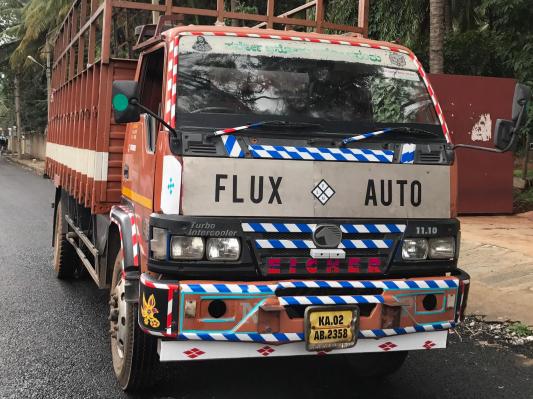A young startup in India wants to makes autonomous driving technology more widely available for truck operators, especially those outside of the U.S., by lower the cost significantly.
The concept of self-driving trucks sat in the background for some time as the vision of autonomous cars ferrying consumers from A to B hogged the limelight, but the potential for trucking is at least on par if not higher — particularly on a global level. Beyond potential safety gains, integrating elements of autonomous car tech can help boost efficiency, too.
Thus far the technology has been pioneered in Silicon Valley, where giants like Uber and Google are working on bringing the tech into trucks — via their Otto (now Uber ATG) and Waymo business units, respectively — while Tesla is preparing to enter to foray. All these solutions require expensive kit that isn’t deployable on all vehicles. That combination means it is likely to be out of reach for most of the world’s trucking community once it is finally available on a commercial basis.
That’s where Flux Auto, a 16-person startup based in Bangalore, hopes to make a difference by democratizing autonomous systems. It is developing technology that, when finished, could enable any kind of truck to be retrofitted with self-driving car technology at a far lower price.
To make its tech accessible, Flux Auto has had to make a compromise. It doesn’t use Lidar — Light Detection and Ranging — sensors which have become the standard for autonomous vehicles, but are incredible expensive. Waymo CEO John Krafcik recently revealed a Lidar would cost $75,000 a few years ago, but these days he claims it is just 10 percent of that price. Even still, at $7,500 it remains prohibitively costly for many truck operates — and that’s just one component.
“While the competition is focusing on LIDAR technology which is very expensive and processing heavy (due to a lot of unneeded data), our vision algorithms can be used with any cheap cameras and has a much quicker response time. This drives down our cost and in turn, the cost for the customer as well, all while having similar levels of accuracy as a LIDAR system,” Flux Auto founder Pranav Manpuria explained to TechCrunch.
Uber ATG’s trucks use a Lidar mounted above the cab
Flux Auto is looking at a product that would retail for around $3,000-$4,500, the price range would be dependent on the level of features a customer wants.
The system is being developed to handle cruise control, lane keeping and collision avoidance. Like Uber AG and Waymo, the idea is to take the strain off of drivers and help make journeys more efficient.
“We’re using cameras along with other sensors — sonar, radar, ultrasonic, etc — to understand everything that’s happening around the vehicle, and make decisions based on that,” Manpuria said. “We’re developing our entire tech stack as an after market accessory. This allows us to target the massive market of already existing commercial vehicles.”
[gallery ids="1525516,1525517,1525518"]
Flux Auto’s Lidar-less test truck
Manpuria, who graduated from the Illinois Institute of Technology and previously ran a payment startup, said the company is looking to raise around $1.5 million to fulfill its goal of deploying its systems on trucks in a range of markets beyond India. Initially it began testing on cars, but it has just equipped its first truck (see above) for the next stage of testing before the end of this month.
Money from investors will go towards expanding the team and developing its technology. Flux Auto is aiming to deploy its tech on 2,500 vehicles within the next twelve months. That’s likely to necessitate a U.S. office, and Manpuria said the business may need to migrate to the U.S. to continue its development in the future. That’s particularly true if India bans autonomous cars, as its transport minister has threatened.
“I’ve been very interested in self-driving and it’s benefits for a while now. However, working on a self driving car didn’t seem appealing since car owners would be reluctant to spend a few thousand dollars on technology where the benefits to them aren’t that obvious,” he said.
“Where this technology makes the most sense, and can have the biggest impact is the trucking industry — and the benefits we provide with our technology are worth an investment into it by truck owners,” said Manpuria.
